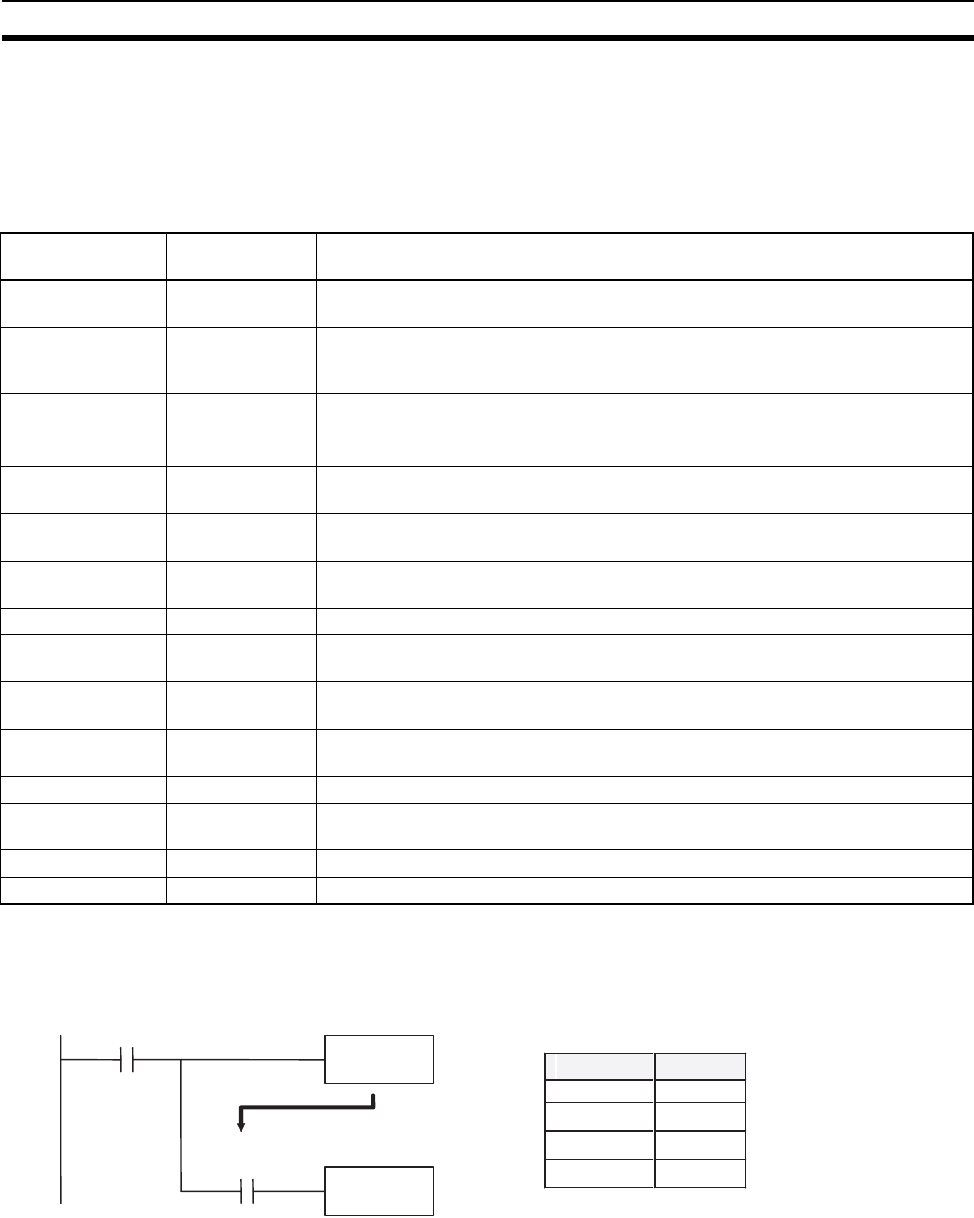
308
I/O Memory Appendix B
The Condition Flags cannot be force-set and force-reset except for the Carry Flag, which can be manipulated
with the STC(040) and CLC(041) instructions.
Summary of the Condition Flags
The following table summarizes the functions of the Condition Flags, although the functions of these flags will
vary slightly from instruction to instruction. Refer to the description of the instruction for complete details on the
operation of the Condition Flags for a particular instruction.
Using the Condition Flags
The Condition Flags are shared by all of the instructions, so their status may change often in a single cycle. Be
sure to read the Condition Flags immediately after the execution of instruction, preferably in a branch from the
same input condition.
Note (1) Since the Condition Flags are shared by all of the instructions, program operation can be changed
from its expected course by interruption of a single task. Be sure to consider the effects of Condition
Flags when writing the program. Refer to Condition Flags on page 281 for details.
(2) The Condition Flags are cleared when the program switches tasks, so the status of a Condition Flag
cannot be passed to another task.
Name CX-Programmer
symbol
Function
Error Flag P_ER Turned ON when the operand data in an instruction is incorrect (an instruction
processing error) to indicate that an instruction ended because of an error.
Access Error Flag P_AER Turned ON when an Illegal Access Error occurs. The Illegal Access Error indi-
cates that an instruction attempted to access an area of memory that should not
be accessed.
Carry Flag P_CY Turned ON when there is a carry in the result of an arithmetic operation or a “1” is
shifted to the Carry Flag by a Data Shift instruction.
The Carry Flag is part of the result of some Data Shift and Math instructions.
Greater Than Flag P_GT Turned ON when the first operand of a Comparison Instruction is greater than the
second or a value exceeds a specified range.
Equals Flag P_EQ Turned ON when the two operands of a Comparison Instruction are equal or the
result of a calculation is 0.
Less Than Flag P_LT Turned ON when the first operand of a Comparison Instruction is less than the
second or a value is below a specified range.
Negative Flag P_N Turned ON when the most significant bit (sign bit) of a result is ON.
Overflow Flag P_OF Turned ON when the result of calculation overflows the capacity of the result
word(s).
Underflow Flag P_UF Turned ON when the result of calculation underflows the capacity of the result
word(s).
Greater Than or
Equals Flag
P_GE Turned ON when the first operand of a Comparison Instruction is greater than or
equal to the second.
Not Equal Flag P_NE Turned ON when the two operands of a Comparison Instruction are not equal.
Less Than or
Equals Flag
P_LE Turned ON when the first operand of a Comparison Instruction is less than or
equal to the second.
Always ON Flag P_On Always ON. (Always 1.)
Always OFF Flag P_Off Always OFF. (Always 0.)
LD
AND
Instruction A
The result from instruction A is
reflected in the Equals Flag.
Instruction B
Instruction A
Instruction B
OperandInstruction
=
Condition Flag
Example: =


















